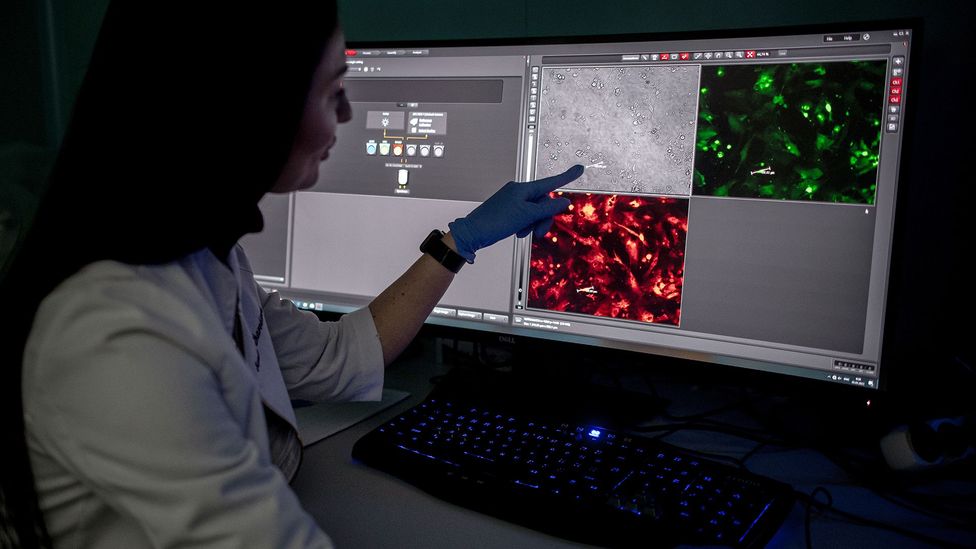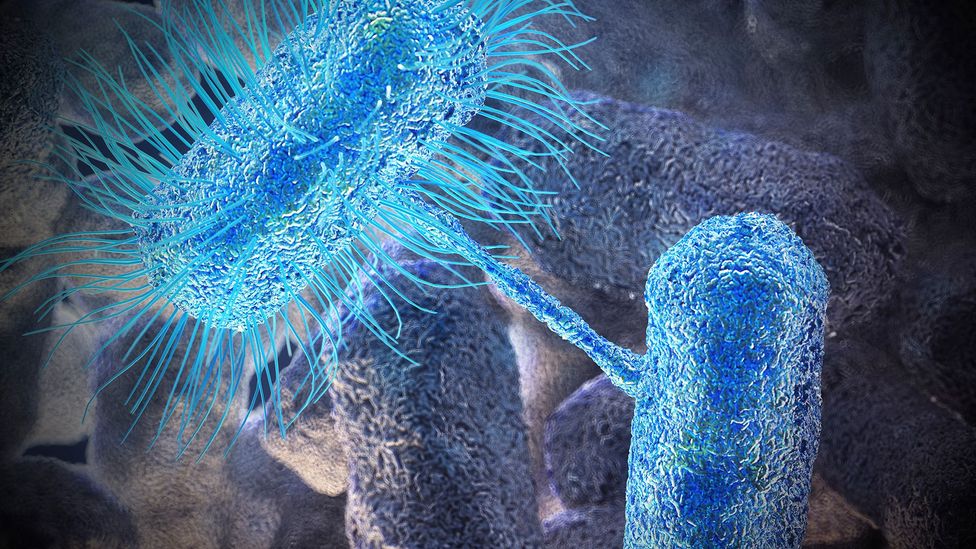
The relatively new discipline of evolutionary medicine is making strides in the fields of cancer treatment and antibacterial resistance.
At age 20, Randolph Nesse was puzzled about why we grow old. He couldn’t wrap his head around why natural selection had not eliminated ageing altogether. He spent months coming up with theories to explain it, but was unable to solve the riddle. Yet, this idling of his inquiring mind would lay the seeds for a whole new way of thinking about medicine.
Some years later, friends at a local natural history museum pointed Nesse towards the theory that ageing is simply a side effect of the evolutionary pressure that has selected certain genes over others. If a condition only manifests after an organism passes its reproductive peak, then there will be no selective pressure to prevent it from being passed on. As a physician, Nesse realised that while he understood how these forces could shape species, he had no clue how natural selection works inside the human body.
“I learned one half of biology. Nobody had ever talked about the relevance of evolutionary biology [in medicine],” says Nesse. “I immediately started wondering if there were similar explanations for genes that cause disease.”
Nesse is now credited as a founding father of evolutionary medicine, sometimes also known as Darwinian medicine – a relatively new and growing discipline that applies evolutionary theory to questions about human health and disease. While most modern medical research focuses on the physical and molecular causes of disease, evolutionary medicine tries to understand why we might have evolved to be susceptible to conditions in the first place, and how we can use evolution to fight them.
“What we’re dealing with here is a whole new basic science that has not been applied to medicine,” Nesse says. It’s a very large enterprise to completely upend what we think about what the human body is and how it works. Yet, a growing number of scientists are trying to apply evolutionary thinking to improve medicine. Their work is already starting to change our understanding of how cancers and autoimmune diseases develop. It is also revealing new strategies for tackling pernicious healthcare-related problems such as antimicrobial resistance.
“I’ve been amazed that there have been so many practical implications so quickly,” says Nesse.
Even the most powerful chemotherapy drugs are only effective for so long before cells develop resistance to them (Credit: Getty Images)
Cancers are themselves a demonstration of the evolutionary process in a microcosm. They are clusters of cells that are continually competing and cooperating with each other in ways that help the tumour grow and flourish. One recent study highlighted the almost “infinite” ability of cancer cells to evolve and survive. When a patient receives drug therapy, for example, it introduces a new selective pressure that weeds out the cells that are most vulnerable to the treatment. Those that are less vulnerable, or even immune from the effects of the treatment, survive to pass on their genetic traits to the cells that follow them. It is why even highly successful cancer therapies will eventually stop working in many patients – the cancer cells develop resistance to the treatment and then uncontrollably grow their populations.
“It is arguable that this is the proximate cause of death in most patients,” says Robert Gatenby, the co-director of the Center of Excellence for Evolutionary Therapy at Moffitt Cancer Center, in Florida, US. Through the lens of evolutionary thinking, Gatenby’s laboratory is developing two different strategies to tackle cancer: adaptive therapy, and extinction therapy.
Adaptive therapy aims to control cancer spread rather than try to eliminate it completely. The dogma for the last 50 years in cancer treatment has been that you apply the same drug, or combination of drugs, in cycles, until there is clear evidence of tumour progression (where the tumour begins growing uncontrollably) or excess toxicity, says Gatenby – which is usually well after the maximum response has been obtained. This is “futile”, he says, since the majority of the cells left are resistant to the drug and by continuing with the same therapy, the oncologist gives them the opportunity to proliferate so their population gets larger and more diverse. His theory of adaptive therapy, by contrast, aims to tweak the dosage of drugs for a tailored approach, just giving enough treatment to knock the tumour down, keeping it as small as possible, without eliminating the sensitive population completely. Then the therapy is withdrawn. This allows the cells sensitive to treatment to continue jostling for space within the tumour, preventing other drug-resistant cells from dominating due to an adaptive advantage.
“Since we can’t control the tumour cells that are resistant to therapy, we need to recruit the treatment-sensitive cells to do it for us,” says Gatenby, who has been developing the idea since first publishing on it in 1991. “You can just keep treating it in cycles and just keep knocking it down and letting it grow, knocking it down, letting it grow.” The hope, he says, is that doctors can keep patients alive for a long period of time, about half of which they don’t have to deal with the side-effects associated with the treatment.
His research group, which is arguably the most advanced in the field, have already shown this technique works in a small pilot trial involving patients with prostate cancer. Patients who underwent adaptive therapy received half the normal dose of a chemotherapy drug over the course of the trial, during which they spent 46% of the time receiving none at all. The time from starting the therapy to when the cancer stopped responding to treatment was 19 months longer in the group who received this adaptive therapy compared to those who underwent the standard course of chemotherapy. The patients who had adaptive therapy also had an overall survival that was 2.26 years greater than those on the standard treatment.
“As these patients only had about half the drug they would have received otherwise, the cost of their therapy was also $70,000 (£57,000) less per patient per year,” says Gatenby.
Our idea is maybe instead of an antibiotic being useful for 20 years, maybe it will become useful for 40 or 50 years – Anne Farewell
In extinction therapy, Gatenby wants to take it even a step further and use what we know from how animal species go extinct to design curative therapies that cause the extinction of cancer populations. The idea would be not to wait for the tumour to regrow after doctors apply the initial therapy, but rather, hitting the tumour with an altogether different therapy before it can recover – catching the tumour cells by surprise with a rapid cycle of a different drug at the peak of its response to that first-line treatment. So far though, only a mathematical model has been published to explore this idea, although Gatenby’s team has proposed clinical trials using extinction therapy against pancreatic cancer and breast cancer.
You might also be interested in:
- The curious ways your skin shapes your health
- Why some diseases still have no name
- The troubling rise in congenital syphilis
The elephant in the room, in fact, is still how research like this is going to go from clinical trials, if it is successful, to acceptance in the real world, according to Michael E Hochberg, distinguished research director at the Centre National de la Recherche Scientifique of the University of Montpellier, in France.
“The main part of the puzzle is turning this into medicine,” says Hochberg. “What is its realistic use, in terms of utility?”
Maybe evolutionary medicine really is the most likely scientific perspective on dealing with big questions like these, according to Hochberg, but doctors still have to treat patients every day by working with solutions they know, tried-and-tested best practices, and little room for hypotheses. “They have a duty to ‘first do no harm’,” he says, and right now, these findings are still too preliminary.
“I think that’s sort of the unspoken major critique of this,” says Hochberg. “Will this ever see the light of day?”
Tumours are actually communities of cells that compete and cooperate with each other (Credit: Getty Images)
Evolutionary medicine is also applied in the search for a solution to one of the fastest-growing problems of the modern world: antibacterial resistance.
As modern medicine has developed powerful antibiotics to annihilate harmful bacteria that infect humans and causes diseases, their widespread use has also inadvertently led bacteria to evolve through natural selection resistance to these drugs. It is estimated that antimicrobial resistant bacteria killed more people than HIV/Aids or malaria in 2019, taking more than 1.2 million lives.
Currently, doctors combat diseases caused by antimicrobial-resistant bacteria by switching to other medications in the hope they will get around the bacterial defences against other drugs. But this practice risks continuing the cycle of resistance rather than stopping it – in fact, bacteria are evolving to become more and more genetically resistant to medication.
Bacteria also develop resistance in a whole range of ways – from swapping genetic material to accumulating random mutations. As a result, evolutionary scientists are testing various different approaches to break down these pathways.
“If we want to solve this problem, we need to understand the evolution and then go after the weak points,” says Andrew Read, the director of the Huck Institutes of the Life Sciences at Penn State University. Read’s team is developing “anti-antibiotic drugs” to help control the spread of antimicrobial resistance in places where the drugs can do more harm than good.
In hospitals, antimicrobial resistance usually happens because some of the strong antibiotics that patients get intravenously – about 5-10%, according to Read – make their way through to the patient’s digestive system. There, they meet an extensive community of microbes, causing harmful changes in the balance of that community and leaving some that have acquired antibiotic resistance. This is what happens in the case of diseases like Clostridium difficile (C. diff), where a patient’s gut is ravaged by this bacteria after having been treated with antibiotics for something else. If patients could take anti-antibiotics that null the effect of the drugs once they reach the gut, it would reduce the likelihood of bacteria there developing resistance. The inactivation drugs themselves don’t do anything, clinically, but they stop the drug from acting in the gut.
“What I like about this approach is, it doesn’t matter at all about the resistance mechanism. It doesn’t matter if resistance is there,” says Read. “It doesn’t matter if and how it was acquired, it just stops the force that drives any resistance up in the population.”
Adaptive therapy approaches in cancer, for example, will require changing the way we think about these diseases – for instance, letting go of the war-like terminology, such as the “battle” and “fight” to “destroy” cancer
His laboratory has already shown this mechanism works well in mice to prevent the spread of the superbug Enterococcus faecium after antibiotic treatment. Other researchers have been able to show that some compounds, like a charcoal-based adsorbent or an enzyme called ribaxamase, can help avoid the spread of C. diff in mice through the same technique.
But this is a general solution that doesn’t inhibit resistance should bacteria and drugs meet.
One reason why bacterial resistance is so hard to tackle is that it doesn’t just happen through the typical, chance-driven evolutionary route – when a random mutation makes some bacteria stronger and able to resist medication. It also happens thanks to horizontal gene transfer, where loops of DNA called plasmids can be passed directly from one bacteria to another. This has been found to happen both within the same species of bacteria and between species. This process allows mutations that convey drug resistance to spread far more quickly.
Anne Farewell‘s research group at the University of Gothenburg, Sweden, is trying to slow down one of the mechanisms that bacteria use to share DNA horizontally, known as “conjugation“. It’s a kind of bacterial sex, where cells come into direct contact, often via a tube that runs between them.
“I know we can’t beat them,” says Farewell, a senior lecturer in molecular biology. “But our idea is maybe instead of an antibiotic being useful for 20 years, maybe it will become useful for 40 or 50 years.”
She’s screening large swathes of microbes to pinpoint which exact pairs of bacterial species can mix and match to mate through conjugation. She’s also researching whether there are any specific environmental conditions – like pesticides or heavy metal contamination – that make it easier, or harder, for those bacteria to conjugate.
Her research has already shown that Escherichia coli, a common bacteria that can cause food poisoning and a wide range of other infections, might be blocked from conjugating if it comes in contact with copper, which reduces its ability to conjugate by almost 100 times. Similarly, earlier research suggests that a certain class of synthetic fatty-acids could inhibit conjugation, as could even sage essential oil. Studies have found the same anti-conjugation properties in benzyl isothiocyanate, an antibacterial compound found in plants of the mustard family, and some naturally occurring chemicals called tanzawaic acids.
“Understanding which molecules screw up conjugation could help develop effective ‘anti-conjugation drugs’, but research here is still preliminary, and there are still plenty of other ways DNA can be shared between bacteria that this approach won’t affect,” admits Farewell. Bacteria are incredibly savvy, she says. “I don’t think there’s going to be one solution. There will be many approaches.”
Interrupting the transfer of genes between bacteria through conjugation might help to combat the spread of antibiotic resistance (Credit: Getty Images)
While the fields of cancer research and bacterial resistance are the most advanced in the field of evolutionary medicine, there’s still a long way to go. Critics argue that despite understanding more about the theory of evolutionary medicine, it’s unclear to what extent this new knowledge can be used practically.
“The problem, in my personal opinion, is unbridled enthusiasm about this,” says Hochberg, who also recently penned a commentary piece on evolutionary medicine for the journal Frontiers. “I’ve rarely seen talks that really focus on this on the problem of the logistics, the profits, and the so forth of the transfer from the bench to the clinic,” he says. “That’s a whole different can of worms.”
Plus, there’s intellectual friction too. While Darwinian academics might be over-enthusiastic, the receiving end of these new theories tends to be more skeptical. Evolutionary medicine alone cannot cure anybody – it’s a framework for thinking about problems in medicine.
“Medicine is practiced by people who do not have training typically in anything to do with evolutionary biology,” says Bernard Crespi, an evolutionary biologist at Simon Fraser University who also recently wrote about the limitations of evolutionary medicine. “The main challenge is bridging the gap between the academics, the training of physicians, and the mindset of the physician in the context of the whole medical establishment of big drug companies.”
Gatenby believes that adaptive therapy approaches in cancer, for example, will require changing the way we think about these diseases – for instance, letting go of much of the war-like terminology, such as the “battle” and “fight” to “destroy” cancer – and thinking about management instead. It will take a lot of convincing, says Gatenby.
How evolutionary medicine is going to find a way to collaborate with the pharmaceutical industry is also still a big question mark.
But Nesse – the man who kickstarted it all – says evolutionary medicine still has the power to provide new questions and new answers about disease. “You can tell I get a little passionate about this because it’s ridiculous. There’s this gulf between evolutionary biology and medicine, and it’s actually harming human health,” Nesse says. “It’s a slow process, but science always wins.”

